45 Healthy Pizza Toppings
This post may contain affiliate links. As an Amazon Associate, I earn from qualifying purchases. Please read my disclosure.Pizza night can absolutely be part of a healthy lifestyle, it’s all about how you build it! In this post, I’m sharing over 40 of the best healthy pizza toppings, plus my favorite better-for-you crust and sauce options to take your homemade pizza to the next level. Whether you’re vegetarian, vegan, gluten-free, or just looking to cut back on processed ingredients, I’ve got you covered because there’s something here for everyone!
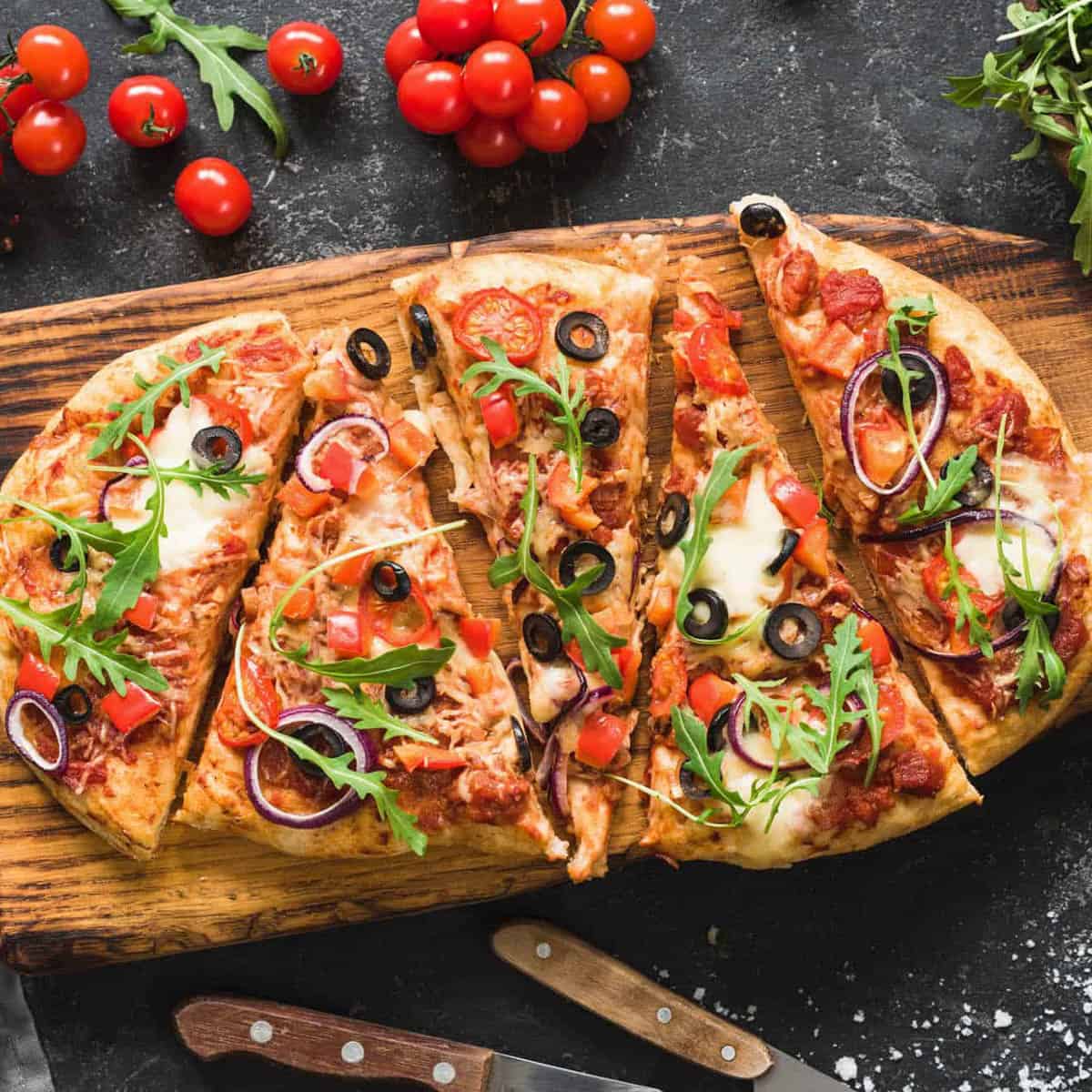
When it comes to nutrition and diet, I’m a bit believer in balance and moderation. Which means, there are no “bad” foods, pizza included! By choosing fresh, nutrient-rich toppings and a more wholesome crust and sauce, you can enjoy all the classic flavors of pizza in a way that supports your health goals.
As a nutritionist and mom, I’ve tested all of these ideas in my own kitchen (often with help from my kids!), and I’m excited to show you how simple it is to turn pizza into a balanced, satisfying meal that still tastes amazing.
I know, many people believe it’s impossible to put the words “healthy” and “pizza” in the same sentence, let alone “delicious.” But I’m here to change your mind. It’s totally possible to select healthier pizza toppings and still enjoy one of your favorite foods.
Over time, you won’t even notice that the pizzas you’re eating are actually good for you too. Personally, I always choose plant-based toppings, but you can make healthy pizzas with meat too – let’s get into it!
Best Healthy Vegetable Toppings For Pizza
When I want to make pizza more nutritious without sacrificing flavor, vegetables are always my first choice. They’re naturally low in calories, high in fiber, and packed with essential nutrients, plus they add incredible texture and color. Here are my go-to healthy veggie toppings that work beautifully on any homemade pizza:
Garlic: Fresh minced or thinly sliced garlic adds bold flavor without extra fat or calories. I always add it early so it can mellow slightly in the oven while still staying fragrant.
Onions: Whether you choose raw red onions for bite or caramelized onions for sweetness, they’re a flavor booster. I often use them with spinach or mushrooms for a savory combination.
Red & Green Bell Peppers: These colorful peppers add crunch, vitamin C, and just a hint of sweetness. I’ll add them either fresh and diced, or roasted and cut into longer strips. I like to pair them with olives and onions for a Mediterranean-style pizza.
Mushrooms: I love mushrooms because they have an earthy, meaty texture, and are a satisfying substitute for processed meats. Try them with vegan cheese or fresh herbs for a hearty, plant-based combo.
Zucchini Or Summer Squash: Thinly sliced zucchini or summer squash roasts perfectly on pizza. I recommend lightly sautéing it beforehand to release its water and avoid sogginess after baking.
Spinach: I love adding fresh spinach on top of my pizza either before or after baking, or sometimes I’ll saute spinach and add it before baking. I’ve done both and spinach pizza tastes great either way, and the spinach gives you a boost of iron and vitamin K.
Arugula: A handful of fresh arugula on top of a baked pizza gives it a peppery bite and a light, fresh finish.
Kale: Since kale is tougher than spinach, I always sauté it first. It holds up well during baking and adds lots of nutrients and texture.
Broccoli: Chop it small so it cooks quickly, and you’ll get a satisfying crunch plus fiber, vitamin C, and a little bit of plant-based protein.
Artichoke Hearts: Marinated artichokes bring a tangy, briny twist. I use them often when I’m making a white pizza with vegan cheese. They also have the benefit of being high in fiber & low fat!
Tomatoes: Yes, these are technically a fruit, but I’m adding them to the veggie list here because they’re used more as a veggie on pizza! Fresh cherry tomatoes or tomato slices work great with basil and mozzarella. For deeper flavor, try roasted tomatoes or even sun-dried.
Sweet Potatoes, Pumpkin, Or Butternut Squash: Roasted chunks (or slices) of any of these veggies add natural sweetness and creaminess. I love using them on fall-themed pizzas with a little bit of cinnamon or sage.
Beets: Thin roasted beet slices make for a colorful and antioxidant-rich topping. They pair well with goat cheese, blue cheese, or walnuts.
Cauliflower: While you can make a cauliflower crust pizza (for a gluten-free option), I also like roasted cauliflower as a topping! It adds a nutty, caramelized flavor I can’t get enough of. I sprinkle it on pizzas with pesto or tahini sauce.
Jalapeños: For a bit of heat, I like using pickled or fresh jalapeños on Mexican-style pizzas.
Asparagus: I’ll typically cut this into bite-sized pieces, then roast it with a bit of lemon zest, and then add it to my pizza with parmesan or mozzarella on top!
Eggplant: Thinly sliced and pre-roasted eggplant works well on veggie pizzas. It’s mild, but it takes on any flavor you pair it with.
Fennel: Thinly sliced, lightly roasted fennel adds a subtle licorice-like sweetness and slight crunch. It’s a great addition to pizzas with vegan sausage or mushrooms. I don’t suggest using it raw.
Corn: Corn adds both sweetness and texture. I make a simple Mexican pizza with corn, paired with black beans, salsa, and a Mexican cheese blend! Corn also tastes great on a pizza with fresh summer squash and other summer veggies.
Basil: Tomatoes, fresh basil, and mozzarella cheese are a match made in pizza heaven. I never get tired of a classic Margherita pizza.
Black Olives: Olives add a salty, briny element to pizza that I like to use to enhance the other toppings. Plus, I just find them delicious. You can also use green olives.
Capers: Briny and salty capers add a pop of flavor! If you’re an olive lover like me I highly recommend sprinkling a few on your pizza.
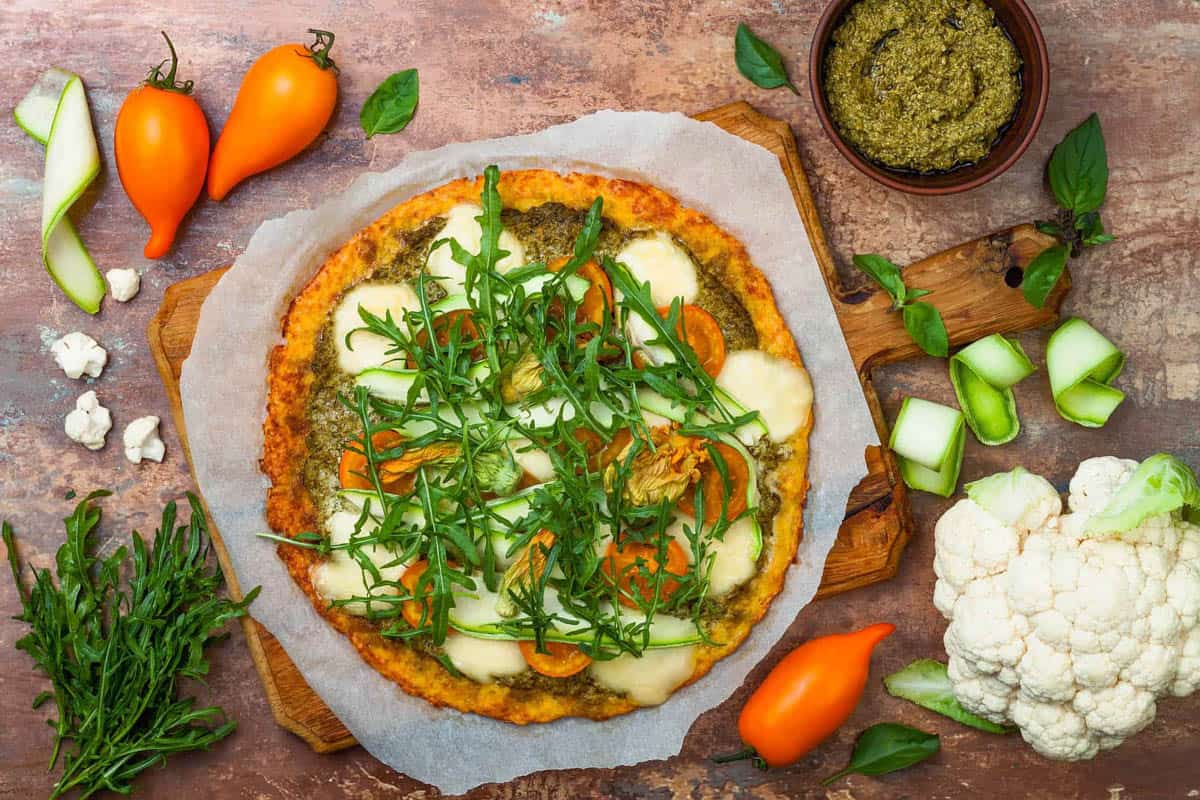
Fruit Toppings
Fruit might not be the first thing that comes to mind when you think of pizza, but trust me, it’s one of the easiest ways to add natural sweetness, fiber, and a fun flavor twist. I love using fruit to balance salty cheeses, bold spices, or rich sauces. Whether you’re making a savory-sweet combo or a more gourmet pie, these healthy fruit toppings always make pizza night more exciting:
Figs: Fresh or dried figs bring rich sweetness and a jammy texture. I love pairing them with a drizzle of balsamic glaze or honey and a sprinkle of goat cheese for a restaurant-style pizza at home.
Pineapple: It’s a classic for a reason. My kids are huge Hawaiian pizza lovers too – and I get it. The natural sugar in pineapple caramelizes slightly in the oven and adds sweetness, which is especially tasty with smoky or spicy toppings.
Pears: Thinly sliced pears work so well with gorgonzola, arugula, and toasted walnuts, like in my pear gorgonzola pizza! This combo is always a crowd-pleaser and looks fancy, with very little effort.
Grilled Peaches: In the summer, I’ll throw fresh peach slices on the grill and then layer them over a pizza with cashew cheese and a drizzle of honey or maple syrup. It’s my go-to sweet-savory combo.
Avocado: While I don’t bake it, I often slice avocado and add it to the pizza after baking. It’s creamy, satisfying, and full of healthy fats, perfect on Mexican-inspired or Mediterranean-style pizzas.
Jackfruit: When I want a hearty, meat-like texture, I’ll use shredded jackfruit (like BBQ or carnitas versions). It adds fiber and makes a great topping for plant-based BBQ pizzas.
Pomegranate Seeds: These are such a fun and unexpected topping. I sprinkle them on after baking for a juicy crunch and a pop of color that always surprises my guests.
Plant-Based Protein Toppings
Protein doesn’t have to mean meat. I love building pizzas that are both satisfying and nourishing by using veggie-based proteins that deliver texture, flavor, and staying power. These are some of my go-to plant-based proteins for pizza night:
Tofu: When I’m looking for a mild protein that soaks up all the flavor around it, I reach for tofu. I usually press and season it, then crumble or cube it for a meaty bite. It’s perfect with barbecue sauce or spicy marinara.
Tempeh: For a heartier, more earthy flavor, crumbled tempeh is my favorite. I like to sauté it with Italian herbs or tamari and layer it with mushrooms and spinach for a protein-rich combo.
Black Beans Or Chickpeas: Both add fiber and plant-based protein, and they work well on Mexican-inspired pizzas or when I want something super filling. I’ve even roasted chickpeas until crisp to sprinkle on top after baking for added crunch.
Veggie Sausage: If I’m craving classic sausage flavor without the heaviness of meat, veggie sausage is a great choice. I slice it thin or crumble it up for that savory hit.
Homemade Tofu Meatballs: When I have leftovers, I’ll cut them in half and layer them onto pizza – my kids love this version! It tastes like comfort food but is actually packed with good-for-you ingredients.
Eggs: Yes, eggs! I’ll crack one right in the center of the pizza and bake it until just set. It makes a great weekend brunch option and adds a boost of protein.
Hummus or Bean Spread: Not technically toppings, but when I want to skip cheese, I’ll use hummus or a blended white bean spread as the “base” and layer veggies and crunchy toppings over it.
Walnuts: I love using walnuts on pizzas with roasted veggies, goat cheese, or fruit like figs or pears. Toasting them first brings out a deeper flavor and adds a satisfying crunch.
Cashews: Creamy and mild, cashews pair beautifully with Indian or Thai-inspired pizza flavors. I sometimes soak and blend them into a cheesy white sauce, or just sprinkle roasted ones on top before serving.
Pine Nuts: These are a must for pesto pizza. Their buttery, nutty taste adds a little richness without overpowering the dish. I toast them until golden, then toss on top after baking.
Pistachios: I like pairing pistachios with arugula, ricotta, or even roasted beets for a more unique pizza combo!
Sunflower Or Pumpkin Seeds: For nut-free options, sunflower and pumpkin seeds are great alternatives. I’ll roast and salt them before using for extra flavor. They work especially well on flatbreads and veggie-loaded pizzas.
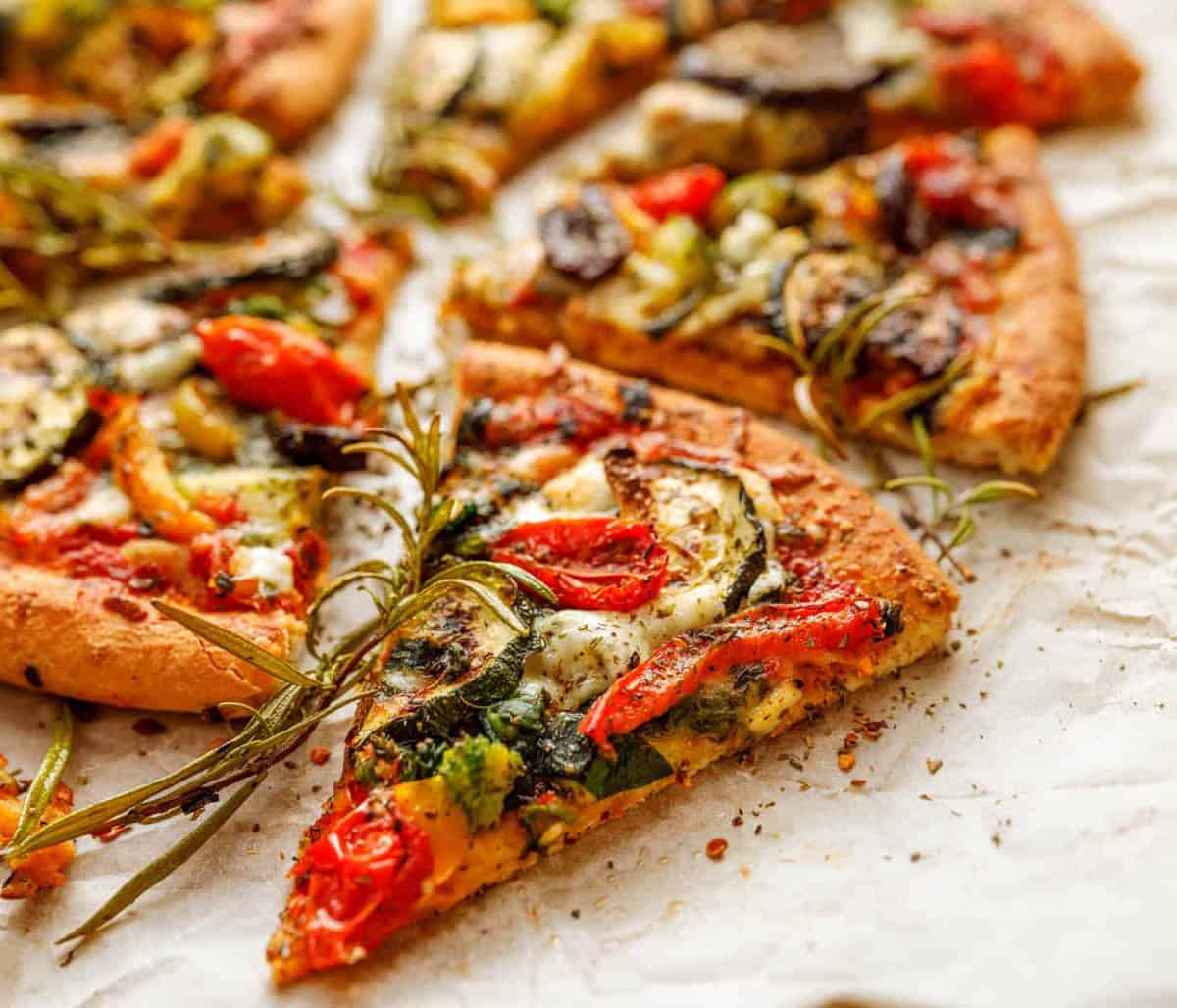
Spices
When it comes to building flavor without piling on calories or fat, herbs and spices are where I start. These aren’t just garnishes. they’re foundational to making any healthy pizza taste incredible. I use them before and after baking, depending on the flavor I’m going for.
Crushed Red Pepper Flakes: Just a pinch adds heat and depth. I love sprinkling this over veggie-loaded pizzas for that little kick that balances out the other ingredients.
Oregano (Fresh or Dried): Oregano is a must-have for that classic pizzeria flavor. I mix it right into the sauce or sprinkle dried oregano on top just before baking. Fresh oregano adds a more peppery, citrusy bite, perfect for Mediterranean-style pizzas.
Basil: If I’m making a Margherita-style pizza, basil is non-negotiable. I layer fresh basil on after the pizza bakes to keep its flavor bright. In winter, I’ll sometimes use a dollop of vegan basil pesto instead.
Thyme: Especially good with mushrooms, caramelized onions, or potato-based toppings, thyme gives pizza a woodsy, savory flavor. I use it when I want something that feels a bit more comforting and fall-inspired.
Rosemary: I use rosemary on white pizzas or when I’m using roasted root vegetables. It’s strong, so I’ll chop it finely or infuse it into a little olive oil to drizzle over the top.
Garlic Powder & Onion Powder: These two are pantry staples I add when I want an extra layer of umami in the sauce or cheese. Just a small sprinkle goes a long way.
Smoked Paprika: This is my secret weapon for adding a slightly smoky, peppery depth, especially when I’m skipping the meat but still want that robust flavor.
Healthy Pizza Base And Crust Alternatives
I’ve shared all my favorite healthy pizza toppings ideas, but pizza is so much more than just what you put on it!
Let’s talk crust: because what your pizza sits on is just as important as what goes on top. As much as I love a classic dough, most traditional pizza crusts are made with refined white flour, which means they’re low in nutrients and high in carbs. Over the years, I’ve tested a ton of healthy crust alternatives, and these are my tried-and-true favorites that deliver on both taste and texture.
1. Low Calorie Whole Wheat Crust: This is my go-to when I want something that feels close to a traditional pizza but with better nutrition. Try my low calorie pizza crust, I make it with whole wheat flour and Greek yogurt, which adds a protein boost and skips the yeast. It bakes up chewy, golden, and holds toppings like a dream.
2. Cauliflower Crust: If you’re looking for a lower-carb, veggie-packed option, cauliflower crust is a winner. It’s surprisingly easy to make from scratch with riced cauliflower, or you can go the store-bought route. Brands like Cali’flour Foods and Outer Aisle make excellent versions. Just be sure to read the labels to avoid unnecessary starches or processed ingredients.
3. Chickpea Crust: Chickpeas are one of my favorite ingredients for healthy cooking, and they make an awesome pizza base too. Chickpea flour or mashed chickpeas both work. I’ve tried Banza’s chickpea crust, which is high in protein and fiber and crisps up nicely for personal pizzas.
4. Whole Wheat Pita Or Tortilla: On busy nights, I use whole wheat pita or tortillas to make my quick, portion-controlled healthy pita pizza. They’re light, hold toppings well, and require zero prep. I just bake them directly on the oven rack to get that crispy bottom. If using tortillas I recommend pre-baking them first and then baking them again once you add the toppings so they don’t get soggy.
5. Portobello Mushroom Caps: These are perfect for individual pizzas and also happen to be an extra veggie too! I remove the stems, fill the caps with sauce and toppings, and roast them until the mushrooms are tender. They’re juicy, savory, and totally satisfying.
6. Zucchini Pizza Boats: To make this, I hollow out zucchini halves, fill them like little pizza canoes, and bake until tender. They’re naturally low-carb, high in vitamin A, and my kids love making their own.
7. Whole Wheat English Muffins Or Bagels: These are nostalgic for me – I grew up on English muffin pizzas! I now use whole wheat versions for added fiber and nutrients. Bagel thins also work well for a slightly larger, still crispy base.
8. Quinoa Crust: Yes, you can turn quinoa into pizza! I cook it, mix with flax or egg substitute, press it into a pan, and bake it into a thin, crispy crust. It’s a great gluten-free, high-protein option that’s sturdy enough for generous toppings.
9. Naan Or Flatbread: For a hearty, satisfying option, I’ll use whole wheat naan or my homemade vegan flatbread. It’s soft but substantial and works especially well for Mediterranean-style pizzas.
Better Pizza Sauce Options
Once you’ve picked your crust, the next step is choosing a sauce that adds flavor and nutrients. I love experimenting with different healthy pizza sauces to keep things interesting. Whether you’re going for classic or creative, these better-for-you sauce ideas will help make your pizza tasty while cutting back on sugar, fat, and overly processed ingredients.
1. No-Sugar-Added Marinara: A good homemade marinara never goes out of style, but many store-bought options are loaded with hidden sugar. I always check labels and look for brands that clearly say “no added sugar.” Or better yet, I make my own with crushed tomatoes, garlic, herbs, and a splash of olive oil.
2. Pesto (Or Oil-Free Pesto): Pesto adds tons of flavor with just a small amount. I love using my healthy pesto sauce on flatbreads or veggie-loaded pizzas. While traditional pesto uses olive oil and parmesan, I often make a dairy-free, oil-free version with fresh basil, lemon, nuts, and nutritional yeast.
3. Crushed Tomatoes With Spices: When I’m short on time, I go super simple and use crushed canned tomatoes mixed with garlic powder, oregano, and a pinch of salt. It’s basically a rustic sauce that takes 30 seconds and is healthy for you!
4. Hummus: If I’m making a no-bake pizza (like a pita pizza for lunch), I spread on some of my homemade hummus instead of sauce. It’s creamy, full of protein, and works especially well with Mediterranean-inspired toppings like olives, cucumber, or roasted red peppers.
5. Bean Spreads Or Vegan Refried Beans: For Mexican-style pizzas, I’ll use refried black beans, pinto beans, or a white bean spread as the base. Just season them with a bit of cumin, lime, and garlic to punch up the flavor.
6. Garlic Paste Or Roasted Garlic Spread: If you’re a garlic lover like me, garlic paste or mashed roasted garlic is a total flavor bomb. I smear it onto the crust before adding toppings, it’s especially amazing paired with mushrooms or spinach.
7. Leftover Pasta Sauce (Like Bolognese): If I’ve made a big batch of vegan bolognese, I’ll often save a bit to use as pizza sauce the next day. It’s hearty, rich in flavor, and a great way to avoid food waste.
8. Veggie Purées: Sometimes I blend steamed veggies (like carrots, zucchini, or cauliflower) along with some jarred marinara sauce into a smooth purée with herbs and garlic. It’s a sneaky way to get more vegetables into my kids’ meals, and no one even notices.
9. Salsa: For a Tex-Mex twist, I use salsa as a base and top with black beans, Mexican cheese, corn, and avocado. Just go for a thicker salsa to avoid soggy crust.
Unhealthy Pizza Toppings To Avoid
Even though I believe pizza can be both nourishing and satisfying, some toppings can seriously tip the scale in the wrong direction. These ingredients are popular, but they tend to be high in saturated fat, sodium, and preservatives, with very little nutritional benefit. Whenever I’m aiming for a healthier pizza night, these are the toppings I skip.
1. Alfredo Sauce: This rich, creamy sauce might taste indulgent, but it’s typically made with butter, cream, and cheese, making it high in calories and saturated fat. I prefer lighter, flavorful sauces like marinara, pesto, or even hummus to keep things balanced.
2. Processed Meats (Pepperoni, Sausage, Bacon, Ham): These meats are loaded with sodium, nitrates, and preservatives. Studies have linked processed meats to heart disease and other chronic health conditions. Instead, I use veggie sausage, marinated tofu, or crumbled tempeh for that same savory flavor without the downsides.
3. Excessive Cheese: Cheese is gooey and amazing, but you can have too much of a good thing! Piling it on too thick adds a lot of saturated fat and calories. I like to use just enough to get that satisfying melt, or I’ll swap in plant-based cheese or sprinkle on a few shreds of sharp Parmesan or feta so a little goes a long way.
4. Deep Dish or Stuffed Crust: While not a topping, deep dish and stuffed crust pizzas can dramatically increase the calorie load. With thick layers of dough and cheese, even a small slice packs in a huge dose of carbs and fat. I stick with thin crust options or veggie-based alternatives to lighten it up.
5. Extra Oil or Butter Brushed Crusts: Some restaurants or frozen pizzas add oil, butter, or even sugar to the crust. It’s easy to overlook this, but those extras can add up fast. I prefer homemade or minimally processed crusts where I can control what’s going in.
FAQs
For a dairy-free or vegan option, I often use vegan cheese made from nuts. While it doesn’t melt exactly like traditional cheese, it still gives that creamy texture. I also love spreading hummus, pesto (check the label if you need it dairy-free), or a white bean puree on the crust to add richness and flavor without cheese.
Start with a crust alternative like cauliflower crust, portobello mushrooms, or even zucchini boats. Then load up on low-carb toppings like spinach, olives, mushrooms, and vegan sausage. Use a sugar-free marinara and omit higher-carb ingredients like corn or starchy veggies.
I recommend using a pizza stone to get that crisp crust, and to choose bold flavors like roasted garlic, fresh herbs, or sun-dried tomatoes, along with a tasty sauce. Adding a bunch of Italian spices helps too! I find that using fewer but higher-quality toppings goes a long way.
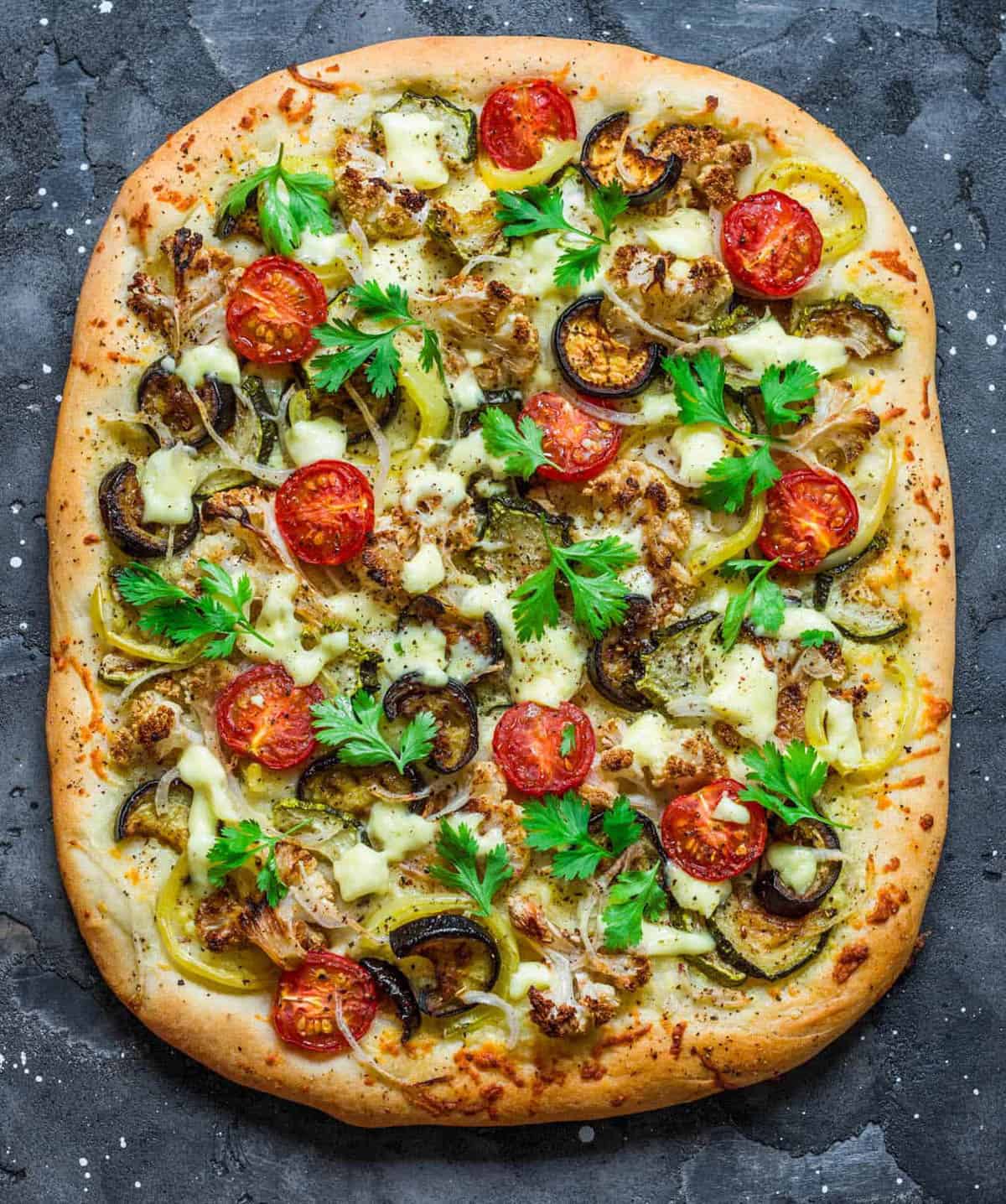
Love these healthy pizza ideas? Please leave a 5-star rating 🌟 in the recipe below and/or a review in the comment section further down the page!
You can also FOLLOW ME on FACEBOOK, INSTAGRAM, and PINTEREST to see more delicious, healthy, family-friendly food, and if you have any questions, I’m here to help!














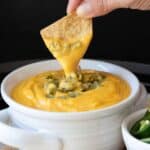





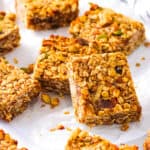



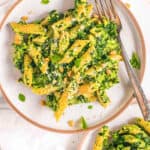
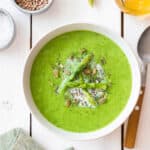



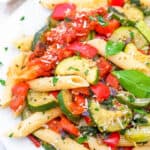


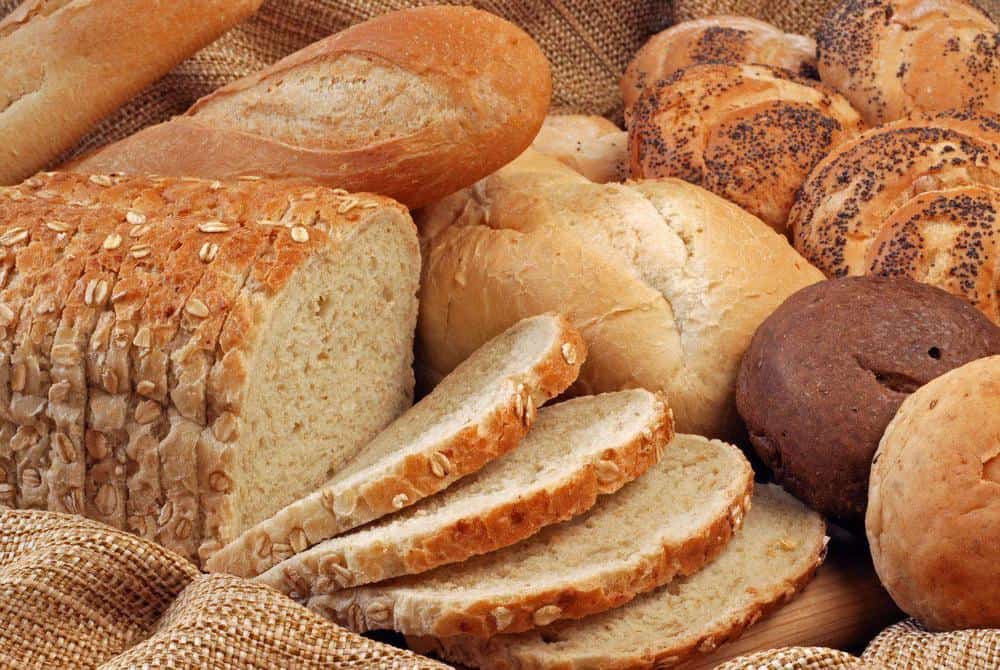
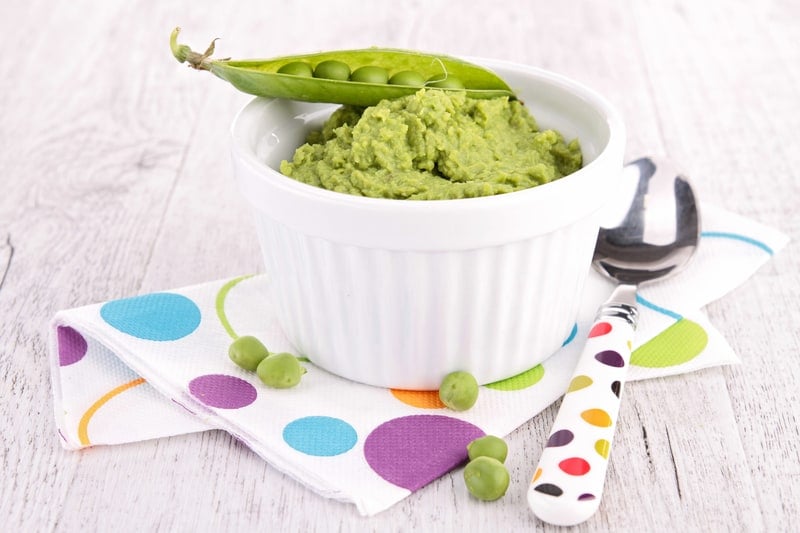
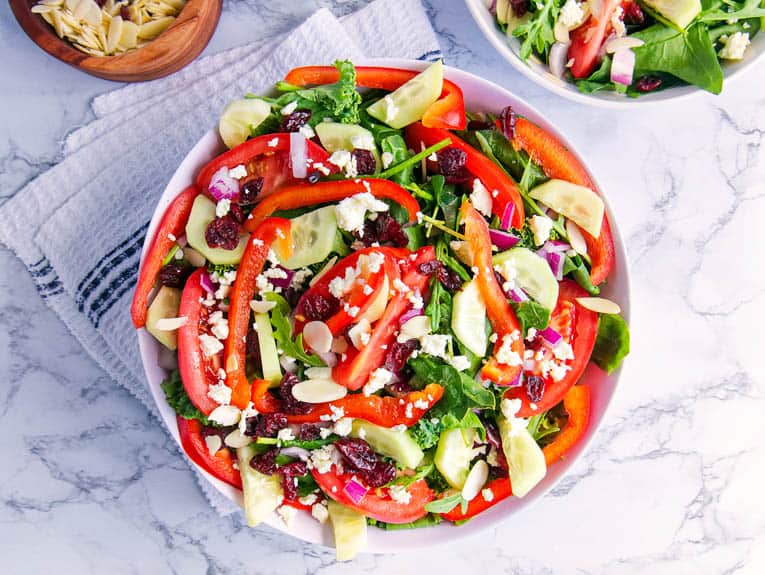



I’m using so many of these for our pizza party next week!
Yes!! 🙂
I love a pizza loaded with delicious veggies! Thank you for all the healthy topping ideas.
For sure! Enjoy!
These are everything a gourmet pizza makes, and then some! Excited to giving these a try; looks too good to pass up!
Yes!! You will love trying out these toppings and combinations I’m sure! 🙂
I try to eat the healthiest frozen pizza, when I don’t go out for it. But what can I put on my frozen pizza, to make it more healthy, and have more protein, because I like meat…
Hi Ronald! You can actually use tofu, seitan, chickpeas or even white beans on your pizza for extra protein, all of which are plant based options. Or turn your frozen pizza into a breakfast pizza by putting a fried egg on top for protein and flavor! You can also add nuts to your pizza – walnuts, pine nuts, and cashews would all work well. Hope that helps!